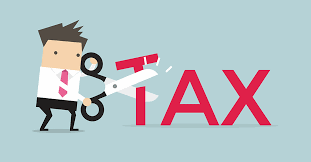Navigating Tax Responsibilities: A Guide for 1099 Income Earners

Tax season can be a daunting time for individuals receiving 1099 income. Unlike traditional employees, freelancers and independent contractors are responsible for managing their tax obligations throughout the year. Below, we’ll go through the steps for 1099 income earners to stay on top of their tax obligations throughout the year.
Understanding 1099 Income:
1099 income encompasses various forms of non-employee compensation, including freelance work, gig economy earnings, and self-employment income. It's important for individuals in these categories to grasp the unique tax implications that come with this type of compensation.
Estimated Quarterly Tax Payments:
Unlike W-2 employees whose taxes are withheld from each paycheck, 1099 earners are typically required to make estimated quarterly tax payments. These payments help spread the tax burden throughout the year, avoiding a significant financial strain during tax season.
Calculating Quarterly Payments:

To determine the amount owed for quarterly payments, you can use the IRS Form 1040-ES. This form assists you in estimating income, deductions, and tax credits for the upcoming year. It's essential to accurately project earnings and deductions to avoid underpaying and incurring penalties.
Setting Aside Funds:
With no employer withholding taxes, it's important for 1099 earners to set aside a portion of their income for taxes. Creating a separate savings account dedicated to tax obligations can help prevent financial stress when quarterly payments are due.
Record-Keeping:

Maintaining organized records is key to a smooth tax-filing process. Keep track of income, expenses, and receipts throughout the year. Online accounting tools and apps can streamline this process, making it easier to generate accurate financial reports.
Taking Advantage of Deductions:
1099 earners may be eligible for various tax deductions related to their business expenses. Common deductions include home office expenses, mileage, and business-related supplies. Consulting with a tax professional can help identify potential deductions and maximize tax savings.
Click here to learn about the different types of deductions you may be able to claim

For taxpayers with 1099 income, proactive tax planning is important. By understanding the responsibilities associated with non-employee compensation, individuals can navigate the tax landscape with confidence. From making timely quarterly payments to leveraging deductions, staying organized and informed will lead to a less painful tax filing experience.
HOW TO MAKE QUARTERLY PAYMENTS
To calculate quarterly tax payments as a 1099 employee, follow these steps:
- Estimate Annual Income: Project your total annual income, considering all sources of 1099 income. This includes freelance work, gig earnings, and any other self-employment income.
- Determine Adjusted Gross Income (AGI): Calculate your adjusted gross income, which includes deductions such as business expenses. AGI is a key factor in determining your tax liability.
- Use IRS Form 1040-ES: Access Form 1040-ES provided by the IRS. This form helps estimate your tax liability and determines the quarterly payments you should make.
- Complete the Worksheet: Follow the instructions on Form 1040-ES to complete the worksheet. This includes estimating your taxable income, factoring in deductions, and determining your tax liability.
- Consider Tax Credits: If eligible for tax credits, factor them into your calculations. Tax credits can reduce your overall tax liability, providing additional savings.
- Calculate Self-Employment Tax: As a 1099 employee, you're responsible for both the employer and employee portions of Social Security and Medicare taxes. Use Schedule SE to calculate your self-employment tax.
- Divide Annual Tax Liability by Four: Once you've determined your estimated annual tax liability, divide it by four to get your quarterly payment amount.
- Set Aside Funds: Regularly set aside a portion of your income for taxes. Consider creating a separate savings account dedicated to tax obligations to ensure you have the funds when quarterly payments are due.
- Meet Quarterly Deadlines: Make sure to submit your quarterly payments by the IRS deadlines. These deadlines typically fall in April, June, September, and January. Failure to make timely payments may result in penalties.
- Adjust Quarterly Payments as Needed: If your income or deductions change throughout the year, reassess your quarterly payments. Use the most up-to-date information to avoid underpayment or overpayment.
It’s always a good idea to talk to a tax professional to make sure your information is accurate and compliant with the tax regulations you are subject to. It is also crucial that you keep a detailed record of any income, qualified expenses, and deductions so you can make your tax filing experience pain-free!
Check out the free resources that the Financial Wellness Center has to get your taxes filed!
